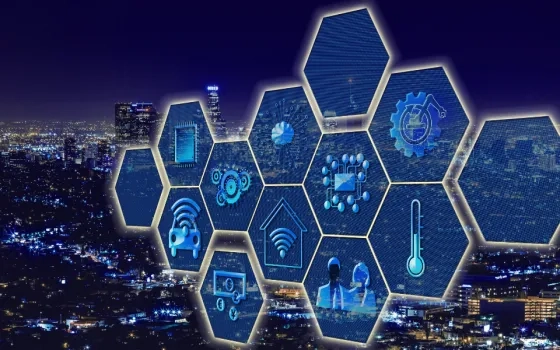
The Digital Dilemma: Balancing Tech, Mental Health, and AI
Ethics in 2025
Powered by Pinaki IT Hub – Building the Next Generation of Ethical AI Leaders
Technology has always shaped the way we live, work, and interact—but in 2025, it’s not just
a tool; it’s the environment we live in. From the rise of creator-driven economies to growing
concerns about mental health, our relationship with technology is at a turning point.
In this blog, we’ll explore four critical aspects of tech culture today:
- Screen addiction and its mental health impact
- Digital detox—fact or fantasy?
- Is tech connecting or isolating us?
- The youth creator economy—empowerment or exploitation?
Alongside, we’ll connect these societal shifts to data governance, AI ethics, and digital
literacy, so you’ll see why mastering these skills is essential for any professional in 2025.
Screen Addiction: How is Tech Affecting Mental
Health?
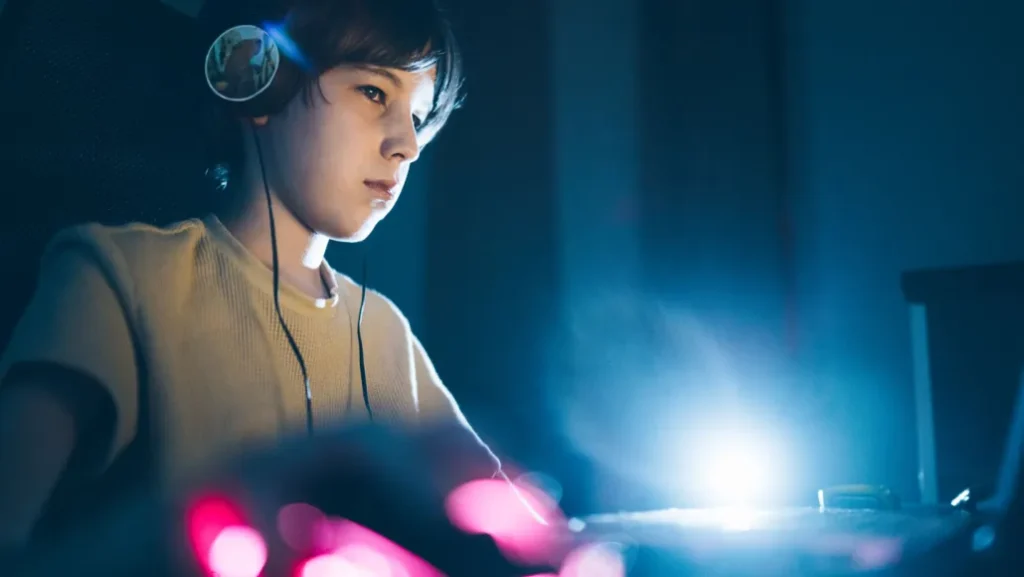
In 2025, our relationship with technology is at an all-time high — and so is our screen time.
On average, a person now spends 9–11 hours a day on digital devices — whether it’s
smartphones, laptops, AR glasses, or mixed-reality headsets.
While this constant connectivity powers our productivity, learning, and entertainment, it also
has a hidden cost — our mental health.
📌 The Hidden Impact of Excessive Screen Time
- Sleep Disruption
● Blue-light exposure from screens delays melatonin production — the hormone that
helps you sleep.
● Late-night scrolling tricks the brain into thinking it’s still daytime, disrupting the
circadian rhythm (our body’s natural sleep-wake cycle).
● Consequence: Insomnia, fatigue, and a higher risk of mood disorders. - Reduced Attention Span
● In 2000, the average human attention span was 12 seconds.
By 2024, it had dropped to just 7 seconds — shorter than that of a goldfish!
● Constant notifications, pop-up ads, and algorithm-driven content keep our brains in a
constant state of micro-distraction.
● Consequence: Difficulty focusing on tasks, reduced deep work capacity, and lower
productivity. - Anxiety & Depression
● Social comparison on platforms like Instagram or TikTok leads people to feel “less
than” others.
● Cyberbullying and online harassment amplify emotional stress.
● Doomscrolling — endlessly consuming negative news — creates a persistent state
of mental fatigue.
● Consequence: Higher rates of anxiety, depressive episodes, and emotional burnout.
🌏 Global Reality Check

● In 2024, Japan reported a 17% rise in “digital burnout” diagnoses among tech
workers.
● The government responded with new workplace mental health laws requiring
companies to set maximum screen exposure limits and offer mental health check-ins.
● Similar trends are emerging in South Korea, the US, and parts of Europe.
🤖 The AI Connection
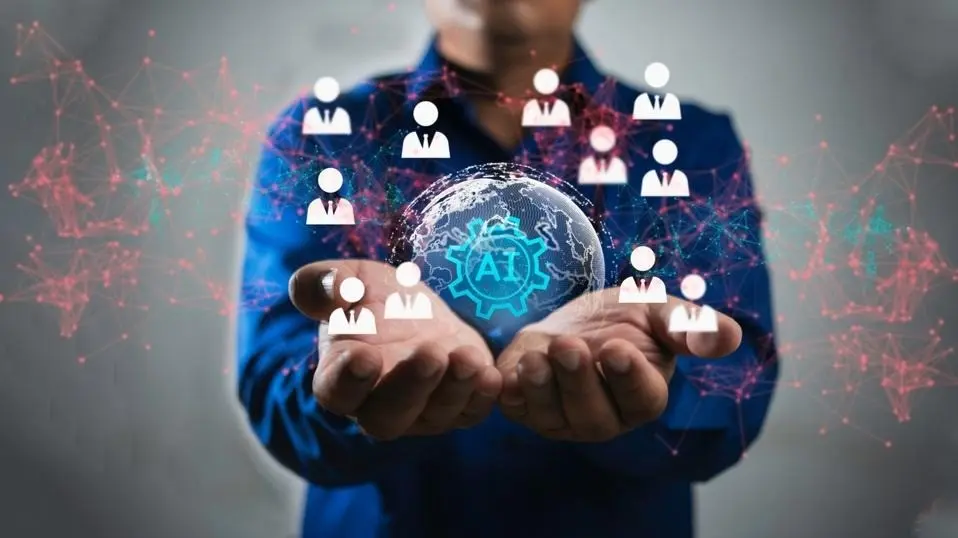
● Modern AI platforms are designed to keep you hooked — they track your likes,
habits, and scrolling patterns to deliver content you can’t resist.
● This “engagement optimization” often prioritizes addictive material over healthy,
balanced consumption.
● Ethical AI governance can help:
○ Set algorithmic limits to avoid overexposure.
○ Offer “digital well-being” nudges.
○ Encourage mindful breaks instead of endless scrolling.
💡 Healthy Tech Habits for 2025
📢Thought: Technology is here to stay — but how we use it will decide whether it becomes
a tool for growth or a source of burnout. A balanced digital lifestyle is not about rejecting
tech, but about using it consciously and healthily.
Want to understand digital wellness and learn practical strategies to manage screen
addiction?
📚 Join Pinaki’s Course on “Digital Well-being & Mindful Tech Use” — because your
mental health matters as much as your online life.
Digital Detox: Can People Really Disconnect?
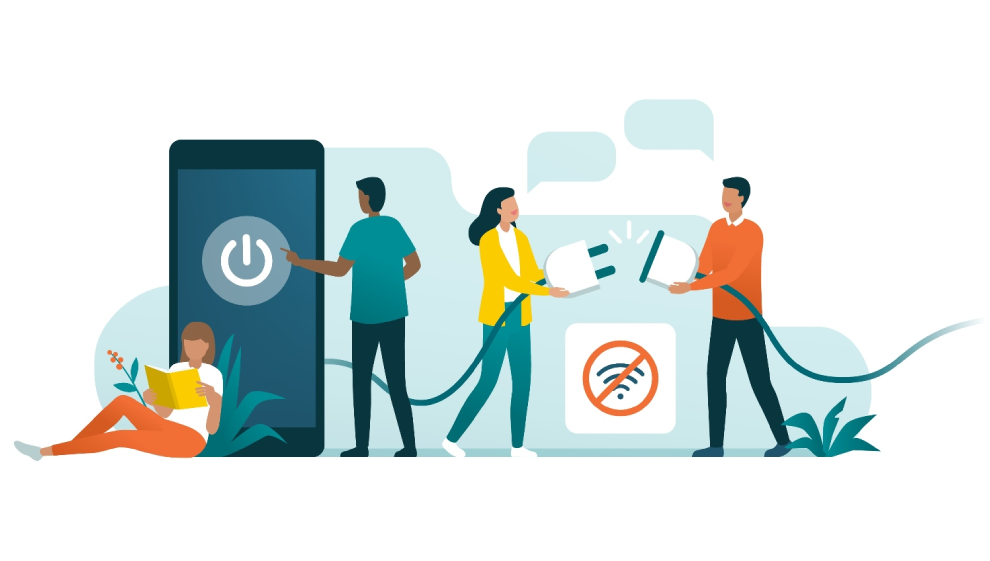
Over the last few years, the term “digital detox” has transformed from a niche lifestyle
choice into a multi-billion-dollar wellness industry.
From luxury resorts promoting “No Wi-Fi Zones” to smartphone apps that track your time
away from other apps, the concept has gone mainstream.
But in 2025, one big question remains:
Is it truly possible to unplug in a world where everything is online?
📊 The Reality Check
According to the 2025 Global Wellness Report:
● Only 8% of people who attempt a week-long digital detox actually make it without
relapsing.
● The main reason? Digital dependency is now woven into the core of daily life.
Why Disconnecting is So Difficult
Social Pressure
Being “offline” can make people feel left out of social updates, group chats, or
professional opportunities.
Work Is Digital
Remote work tools, cloud platforms, and virtual meetings make it nearly impossible
to stay productive without screens.
Life Is Digital
○ Banking: Most transactions are online or via apps.
○ Payments: From street food stalls to supermarkets, QR codes and UPI have
replaced cash.
○ Communication: WhatsApp, emails, and Slack are the primary modes of
contact — even for emergencies.
🔍 Case Study: The Singapore Corporate Detox Pilot
In 2024, a large Singapore-based company tested a 1-day-per-month “Digital Detox
Pass” for its employees.
● Employees were encouraged to avoid non-essential devices for 24 hours.
● Results:
○ Productivity rose by 14% (fewer distractions meant deeper focus).
○ Stress levels dropped during detox days.
○ However: Most participants still checked devices occasionally — especially
for urgent work messages or family updates.
🤖 The AI Connection
Future AI personal assistants could make healthy disconnection easier by:
● Blocking non-urgent notifications during rest or family time.
● Monitoring signs of mental fatigue and suggesting breaks before burnout hits.
● Filtering content so only truly important updates come through during “detox hours.”
● Creating custom offline schedules that align with a person’s work, hobbies, and
sleep cycle.
💡 Practical Tips for a Realistic Digital Detox
You don’t have to go fully offline to feel the benefits. Start small:
Plan Offline Activities — Hobbies, outdoor walks, or in-person meetups to replace
screen time.
Micro-Detoxes — Take 2–3 hours daily without screens (e.g., during meals,
workouts, or before bed).
No-Phone Zones — Keep devices out of bedrooms or dining areas.
App-Free Days — Choose one weekend day to avoid social media entirely.
Use Tech to Fight Tech — Install apps that block distracting sites during working
hours.
📢 Thought:
A digital detox in 2025 isn’t about abandoning technology — it’s about reclaiming control over it. The goal isn’t total disconnection, but mindful connection that serves your well-being instead of draining it.
Want to learn practical, science-backed methods to reduce screen fatigue without hurting your work or social life?
📚 Join Pinaki’s Digital Wellness Course — and discover how to live with technology, not
for it.
Is Technology Making People More Isolated or More
Connected?
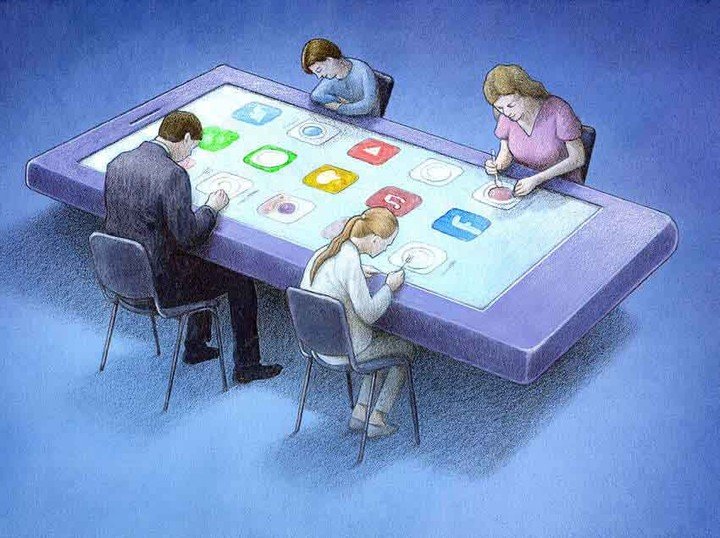
In the digital era, one of the most heated debates is whether technology is bringing us
closer together or pushing us further apart.
The reality? It’s doing both — simultaneously.
✅ How Technology is Making Us More Connected
AI-Powered Communication Without Borders
○ Real-time AI translation tools now allow instant multilingual video calls.
○ Friends, family, and colleagues can communicate naturally, regardless of
language barriers.
Immersive Virtual Social Spaces
○ VR platforms such as Meta Horizon Worlds or Spatial allow people on
different continents to “meet” in lifelike 3D spaces — sharing experiences
like concerts, games, and even co-working.
Empowering Marginalized Voices
○ Online communities and social platforms provide safe spaces for people who
feel unheard in the offline world.
○ Movements for social justice, climate change, and mental health awareness
have grown globally through digital activism.
❌ How Technology is Making Us More Isolated
Loneliness Epidemic
○ According to WHO data (2025), there’s been a 22% rise in reported
loneliness among urban Gen Z compared to pre-pandemic levels.
○ Paradox: People have thousands of online “friends” but still feel emotionally
disconnected.
Decline in Physical Socialization
○ Many urban friendships now exist only in DMs or group chats — meet-ups
are rarer, and face-to-face connections are fading.
Device Dependency Over Human Touch
○ The rise of “phantom vibration syndrome” — when people think their
phone buzzed even when it didn’t — reveals how our brains are rewiring to
seek device-based interaction more than real-life engagement.
🔍 Real-World Snapshot
● A global survey by Digital Life Index 2025 found that 64% of people feel technology
helps them “stay connected,” but 51% admit they spend less time physically meeting.people than they did five years ago.
● This means tech is bridging distances — but also building invisible walls between us.
🤖 The AI Connection
With ethical AI governance, platforms can focus on:
● Encouraging quality interactions instead of chasing shallow metrics like screen
time.
● Detecting patterns of social withdrawal and suggesting healthier engagement.
● Balancing algorithms to promote meaningful conversations over endless, passive
scrolling.
Example: An AI-powered social app could limit exposure to mindless content and instead
connect you with friends you haven’t spoken to in months.
💡 How to Stay Connected Without Feeling Isolated
Be Intentional — Instead of “liking” a post, send a direct, thoughtful message.
Hybrid Socializing — Use tech to plan and maintain real-life meet-ups.
Limit Passive Consumption — Spend more time messaging or calling than just
scrolling.
Digital Sabbaths — Designate certain hours or days for only in-person interactions.
Join Interest-Based Communities — Pick ones that also have offline meet-ups or
events.
📢 Thought:
Technology is a bridge — but it’s up to us whether we walk across it to connect with others or just stand on our side, scrolling endlessly.
Want to master the art of staying digitally connected without feeling emotionally distant?
📚 Join Pinaki’s Digital Well-being & Social Balance Course — and learn how to make
technology work for your relationships, not against them.
Youth & the Creator Economy – Empowerment or
Exploitation?
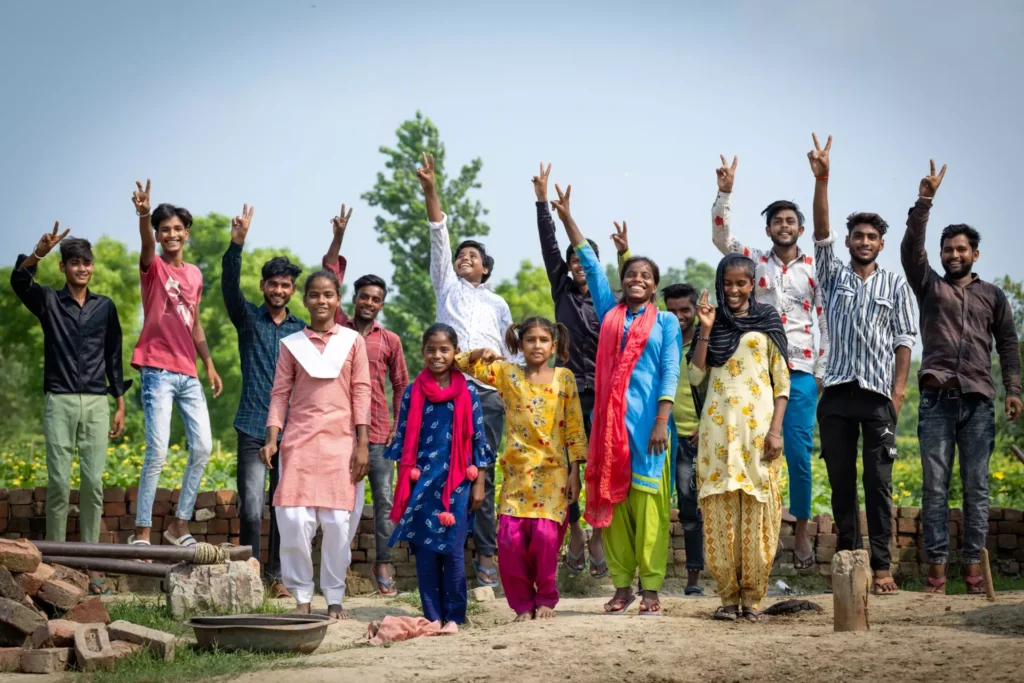
In 2025, the creator economy has become one of the most influential career ecosystems in
the world.
From YouTube channels to Instagram reels, gaming live-streams to AI-assisted art — 1 in 4
Gen Z individuals now earns at least part of their income from creating and sharing content
online.
It’s a powerful shift: young people no longer have to wait for corporate approval to showcase
their talent. But behind the glamour lies a double-edged sword.
✅ The Empowerment Side
- No Corporate Gatekeepers
○ In the past, artists, entertainers, and writers needed publishing houses,
studios, or media networks to reach an audience.
○ Today, creators can publish directly to millions, retaining full ownership of their
personal brand. - AI-Driven Creativity & Efficiency
○ AI editing tools like Runway, CapCut AI, or Descript allow even small creators
to produce professional-level videos.
○ Script generators, thumbnail design tools, and SEO optimizers help creators
market their work without a full production team. - Niche Monetization
○ Small audiences can still be profitable through crowdfunding,
memberships, and direct fan support via platforms like Patreon, Ko-fi, and
Buy Me a Coffee.
○ Micro-influencers are thriving because bran.
❌ The Exploitation Side
Revenue Cuts by Platforms
○ Many platforms take 30–50% of a creator’s earnings through ad revenue
shares, transaction fees, or in-app purchase cuts.
Algorithm Dependency
○ An influencer’s income can vanish overnight if a platform changes its
algorithm — lowering visibility and engagement without warning.
High Burnout Rates
○ The pressure to constantly produce fresh content leads to mental exhaustion.
○ “Content churn” — the need to post daily or even multiple times a day — can
lead to creative fatigue, anxiety, and depression.
Data & Content Misuse
○ In early 2025, a leading short-video platform faced global backlash after it
was revealed they used creators’ videos to train AI models without
consent.
○ This sparked worldwide debates on data rights, intellectual property, and
fair compensation.
🔍 Real Example: The AI Training Controversy
● Creators discovered their personal videos — including voice, likeness, and creative
style — had been fed into AI systems without explicit permission.
● Many argued that this not only violated privacy but also enabled AI tools to
replicate their creative work, potentially replacing them in the future.
● The incident pushed lawmakers to consider “Creator Content Licensing” — where
platforms must obtain consent and offer royalties if content is used for AI training.
🤖 The AI Connection
AI can be both a tool and a threat in the creator economy.
● Positive Side: Automates editing, enhances creativity, predicts trending topics, and
enables global reach.
● Negative Side: Without data governance, creators risk losing control over how their
work is stored, replicated, and monetized.
Key AI Governance Principles for Creators:
Protect Your IP — Watermark, license, and register important works.
Data Ownership — Creators should retain full legal rights to their work.
Transparent Consent — Platforms must disclose how content will be used.
Fair Monetization — If content trains AI models, creators should be compensated.
💡 How Young Creators Can Protect & Grow
Diversify Income Streams — Don’t rely on a single platform; use multiple channels
(YouTube + Instagram + Patreon + Merch).
Own Your Audience — Build email lists or personal websites to avoid losing
followers if a platform fails.
Understand Contracts — Read platform terms carefully before posting.
Balance Creation & Rest — Schedule downtime to prevent burnout.
Protect Your IP — Watermark, license, and register important works.
📢 Thought:
The creator economy offers unprecedented freedom and income potential for young
people — but without safeguards, it can easily slide into exploitation. In 2025,
empowerment will only last if creators own their work, their data, and their audience.
Want to learn how to turn your creativity into a sustainable, burnout-free career?
📚 Join Pinaki’s Creator Economy Masterclass — and build your online empire without
giving away your power.
Why These Trends Matter for AI, Data Governance &
Careers in 2025
The four major issues we’ve discussed —
● Screen addiction
● Digital detox challenges
● Isolation vs. connection
● Creator empowerment vs. exploitation
— may seem different at first glance, but they share one underlying connection:
They all depend on how technology and AI handle human data.
In 2025, data is the invisible currency driving our online lives. Every click, swipe, and
upload is recorded, processed, and often monetized. Without strong governance, this data
can be used in ways that harm mental health, undermine autonomy, or strip creators of
ownership.
📌 Data Governance in AI – The Safety Net
Data governance in AI refers to policies, systems, and safeguards that ensure:
● Fair Use: Algorithms don’t exploit human vulnerabilities (e.g., pushing addictive
content to keep users online longer).
● Transparency: Users understand how their data is being used and can give or
withdraw consent.
● Security: Personal data is stored safely and protected from breaches.
● Ethical Compliance: AI models are trained with approved, licensed data — not
stolen content.
When applied correctly, data governance can protect mental health, uphold privacy, and
ensure creators get fair compensation.
⚙️ Automation of Data Governance – The New Standard
With billions of data transactions happening per second, manual monitoring is impossible.
In 2025, companies are adopting automated data governance tools that:
● Continuously scan AI models for compliance issues.
● Detect unethical data use in real time.
● Flag algorithmic biases before they cause harm.
● Generate instant audit reports for regulators.
This shift is not just about compliance — it’s about building trust with users and avoiding
costly PR disasters.
💼 The Career Impact – Skills in Demand
According to Gartner 2025:
● 70% of AI-related jobs now demand ethical AI skills — including the ability to
evaluate algorithms for fairness, privacy, and societal impact.
● Professionals who understand both AI technology and governance are becoming
highly sought after.
Emerging Roles in AI & Data Governance:
AI Ethics Consultant – Advises companies on balancing profit with user well-being
AI Governance Analyst – Monitors AI systems for ethical, legal, and social
compliance.
Data Compliance Officer – Ensures organizational data handling meets regional
and global laws.
Algorithm Transparency Specialist – Creates explainable AI models that
regulators and users can understand.
📊 Market View – The Growth Ahead
● The AI Governance Tools Market is projected to grow from $3.6B in 2024 to $8.3B
by 2028.
● Demand for governance-related AI talent is growing at 35% year-on-year, outpacing
many traditional IT roles.
● Governments worldwide — from the EU to Singapore — are introducing AI
Accountability Laws, making compliance not just good practice, but a business
survival requirement.
🌍 Why This Matters to Everyone
● For users, it means safer, healthier, and more transparent tech experiences.
● For creators, it means retaining control and fair monetization of their work.
● For businesses, it means avoiding lawsuits, fines, and brand damage
● For career seekers, it means a new wave of high-paying, future-proof jobs in the AI
governance space.
📢 Thought:
In 2025, AI and data governance aren’t just technical concerns — they’re human concerns.
The way we manage data today will decide whether technology empowers us or exploits us
tomorrow.
Want to future-proof your career and understand how AI ethics, data governance, and
human well-being connect?
Pinaki IT Hub – Your Gateway to Mastering Ethical AI &
Data Governance
At Pinaki IT Hub, we prepare you not just to use technology, but to shape it responsibly.
In our AI Data Governance & Ethics Program, you’ll learn:
● Building bias-free AI systems
● Data lifecycle management with compliance automation
● Handling real-time AI monitoring
● Global AI regulations – EU AI Act, GDPR, India’s DPDPA
● Hands-on projects in bias detection, synthetic data testing, and governance
dashboards
💼 Career Outcomes:
Our alumni work as AI Governance Analysts, Ethical AI Consultants, and Compliance
Engineers in top global firms.
🚀 In 2025, understanding technology’s impact on society isn’t optional—it’s survival.
Whether you want to fight algorithmic bias, protect user privacy, or lead ethical AI projects,you need the right skills now.
📢 Join Pinaki IT Hub’s AI Data Governance Program today—because the future won’t
wait, and neither should you.
🔗 Enroll Now & Become the Ethical AI Leader the World Needs.



